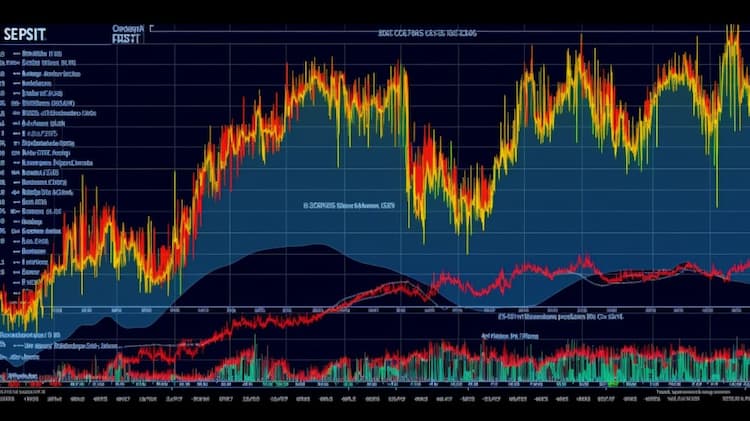
FXH VS FHLC
Compare the FXH and FHLC ETFs with our thorough analysis. Dive into the performance metrics, underlying assets, and investment strategies.
The SPDR Portfolio Intermediate Term Corporate Bond ETF (SPIB) is managed by SSGA Funds Management, Inc. (SSGA FM). SPIB aims to track the performance of the Bloomberg U.S. Intermediate Corporate Bond Index. Instead of purchasing all the securities in the Index, SPIB employs a sampling strategy to hold a portfolio with similar risk and return characteristics. The ETF typically invests at least 80% of its assets in the securities comprising the Index, focusing on investment-grade, fixed-rate, taxable U.S. dollar-denominated debt with maturities of 1 to 10 years, issued by various industrial, utility, and financial institutions. Additionally, SPIB may use derivatives to achieve its investment objectives and is rebalanced monthly. The Index is sponsored by Bloomberg Index Services Limited, an entity independent of the Fund and its Adviser.
While the SPDR Portfolio Intermediate Term Corporate Bond ETF (SPIB) primarily aims to track the Bloomberg U.S. Intermediate Corporate Bond Index, it does not focus on dividends as its main objective. Dividend distributions for this ETF are influenced by the underlying index's constituent companies' dividend policies and performances. Typically, these distributions occur on a periodic basis, and the frequency may vary based on the individual dividend policies of the included securities. Investors looking for a balance between fixed income investments and potential dividend returns may consider SPIB as it holds a portfolio of intermediate-term corporate bonds with generally similar risk and return characteristics to the index.
Tracking the Bloomberg U.S. Intermediate Corporate Bond Index is the primary objective of the SPDR Portfolio Intermediate Term Corporate Bond ETF (SPIB). This ETF employs a sampling strategy, allowing it to hold a subset of securities from the Index that mirrors its risk and return characteristics. Generally, SPIB invests at least 80% of its assets in the securities that make up the Index, along with securities with similar economic attributes. Additionally, SPIB may utilize derivatives and money market instruments to enhance its tracking ability. The Bloomberg U.S. Intermediate Corporate Bond Index measures the performance of U.S. corporate bonds with maturities greater than or equal to 1 year and less than 10 years, issued by industrial, utility, and financial institutions with $300 million or more par amount outstanding. While the ETF primarily focuses on the financial and industrial sectors, its portfolio composition may vary over time. The Index is rebalanced monthly and is not affiliated with the ETF or its advisor, State Street Global Advisors.
The correlation aspect of the SPDR Portfolio Intermediate Term Corporate Bond ETF (SPIB) is essential for understanding its performance within the realm of intermediate-term corporate bonds. SPIB seeks to track the Bloomberg U.S. Intermediate Corporate Bond Index, indicating a strong correlation with this specific bond segment. Investors often turn to SPIB for stable income and moderate risk exposure within their portfolios, as it provides a valuable component for diversification and income generation. For those interested in studying SPIB's correlations with other asset classes or sectors, our tool ETF Insider offers a web app with simple visualization tools that delve into deep and insightful data, showcasing areas of overlap and providing the information needed to make informed investment decisions.
The SPDR Portfolio Intermediate Term Corporate Bond ETF (SPIB) primarily focuses on the corporate bond sector. This ETF seeks to provide investors with exposure to intermediate-term investment-grade corporate bonds, helping them benefit from steady income generation and reduced interest rate risk. SPIB's portfolio typically includes a diverse selection of corporate bonds, with varying maturities, issued by both U.S. and non-U.S. companies. This sector concentration allows investors to access stable returns while maintaining a level of risk suitable for income-oriented portfolios.
The exposure characteristic of the SPDR Portfolio Intermediate Term Corporate Bond ETF (SPIB) is centered around U.S. intermediate-term corporate bonds. SPIB seeks to replicate the performance of the Bloomberg U.S. Intermediate Corporate Bond Index, which comprises investment-grade, fixed-rate, U.S. dollar-denominated debt with maturities of greater than or equal to 1 year and less than 10 years. This ETF provides investors with exposure to a diversified portfolio of corporate bonds issued by both U.S. and non-U.S. industrial, utility, and financial institutions. SPIB's investment approach involves a sampling strategy, allowing it to hold a subset of the securities in the index while aiming to maintain similar risk and return characteristics. Investors looking for stable income with moderate risk in the corporate bond market can consider SPIB as part of their portfolio diversification strategy.

ETF Insider is a data-driven portfolio analytics and optimization platform that introduces a more efficient and practical way to visualize, analyze and optimize portfolios.
Rather than focusing on the surface-level attributes of ETFs and Mutual Funds, ETF Insider goes deeper by examining the underlying holdings of exchange traded products.
By organizing and structuring that data, investors can easily navigate within their overlapping layers.
This innovative perspective combined with modern data visualization and modeling tools, provides an entirely new approach to portfolio optimization that can quickly expose both portfolio inefficiencies and opportunities.

Compare the FXH and FHLC ETFs with our thorough analysis. Dive into the performance metrics, underlying assets, and investment strategies.

The BYRE ETF is a specialized investment fund that focuses on global companies in the relevant sectors. This exchange-traded fund offers investors exposure to a diverse range of innovative and cutting-edge companies engaged in advancements in the industry. Discover the potential growth opportunities and risks associated with investing in this dynamic sector through the BYRE ETF.

To invest in the EWQ ETF (iShares MSCI France ETF), you can follow these steps: Open a brokerage account with a reputable online broker. Fund your account with the desired amount of money. Search for the ticker symbol "EWQ" on the broker's platform and place a buy order for the number of shares you want to purchase. Confirm the transaction, and you will become a shareholder of the EWQ ETF, which tracks the performance of French stocks listed on the MSCI France Index. (Note: The requested task does not involve an article, so I provided a concise guide on how to invest in the EWQ ETF instead.)
ETF Insider is a novel portfolio optimization tool that uses the power of data visualization to gain insight into portfolio compositions, concentration risks, portfolio efficiency and more. Complex financial data can be transformed into visually appealing and easily digestible graphs and charts, allowing investors to quickly identify trends and make well-informed investment decisions. Not only does this save time, but it also increases the accuracy and effectiveness of portfolio management.